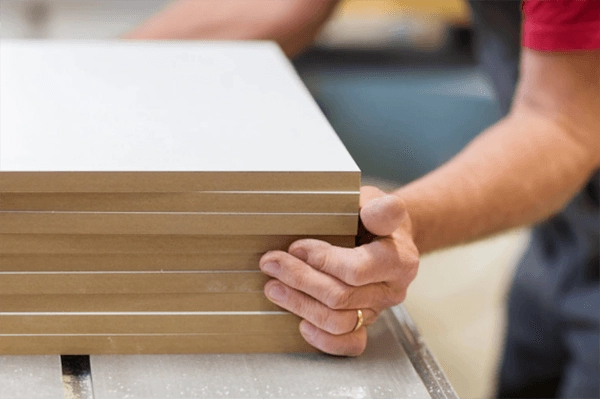From Cabinets to Crafts: The Versatile World of MDF Fiberboard
Ever admired those sleek, modern kitchen cabinets or fawned over a perfectly crafted bookshelf? Chances are, the magic ingredient behind those smooth surfaces might be MDF – the unsung hero of the wood-working world. But what exactly is MDF, and why is it such a popular choice for furniture, crafts, and construction projects? Let’s dive into the fascinating world of this versatile material.
Understanding MDF: More Than Just Wood Shavings
MDF, short for Medium-Density Fiberboard, isn’t your typical piece of lumber. Unlike solid wood, which comes straight from the tree, MDF is an engineered wood product. Imagine taking wood, breaking it down into tiny fibers, mixing it with glue and resin, then pressing it all together under high heat and pressure. The result? A dense, uniform sheet material with some impressive qualities.
Here’s what makes MDF stand out:
Smooth Operator: Unlike solid wood with its knots and grain variations, MDF boasts a super-smooth, consistent surface. This makes it ideal for projects where a flawless finish is key, like painting or laminating.
Shape Shifter: MDF is incredibly easy to work with. Power tools slice through it like butter, allowing you to create intricate shapes and designs. Think custom molding, curved furniture components, or even elaborate jigsaw puzzles!
Stability Matters: Solid wood can warp and twist with changes in temperature and humidity. MDF, on the other hand, is much more dimensionally stable, making it a reliable choice for long-term projects.
Cost-Effective Champion: Compared to solid wood, particularly high-end varieties, MDF is a budget-friendly option. This allows you to achieve a high-quality look without breaking the bank.
Beyond Cabinets: Unveiling the Many Uses of MDF
Sure, MDF shines in the world of kitchen cabinets and built-in furniture. But its applications extend far beyond the kitchen. Here are just a few ways this wonder material gets put to work:
Crafting Corner: From dollhouses and decorative signs to intricate scrollwork and picture frames, MDF is a crafter’s dream come true. Its smooth surface takes paint and embellishments beautifully, making it perfect for unleashing your creative side.
Flooring Foundation: High-density MDF can be a great underlayment for various floorings like hardwood, laminate, or even vinyl tiles. It provides a smooth, level base that prevents unevenness and enhances the overall lifespan of your flooring.
Trim Time: Those elegant crown moldings, stylish baseboards, and intricate wainscoting panels? Many times, they’re crafted from MDF. Its ability to be shaped and painted flawlessly makes it ideal for adding architectural details to your space.
Doors & Drawers: Interior doors, especially those with smooth, painted finishes, often utilize MDF for their core construction. Likewise, MDF drawer sides and bottoms are popular choices due to their stability and affordability.
Speaker Showcase: MDF’s high density and uniform structure make it a popular choice for building speaker cabinets. It creates a solid, resonant environment for speakers to deliver clear, powerful sound.
MDF vs. Plywood: Choosing the Right Champion
So, you’re ready to embark on your next project, but with so many wood options available, you might be wondering: MDF or plywood? Both are excellent materials, but each has its strengths:
Moisture Matters: MDF is not a big fan of water. While some varieties offer improved moisture resistance, for projects exposed to water, plywood with its glue layers is a better choice.
Strength Showdown: Plywood, with its cross-ply construction, offers superior structural strength compared to MDF. So, for projects like load-bearing shelves or heavy-duty furniture, plywood might be the way to go.
Ultimately, the choice depends on your specific project needs. If a smooth, readily customizable, and budget-friendly material is your priority, then MDF is a fantastic option. However, for projects demanding ultimate strength or moisture resistance, plywood might be a better fit.
Post time: 05-28-2024












